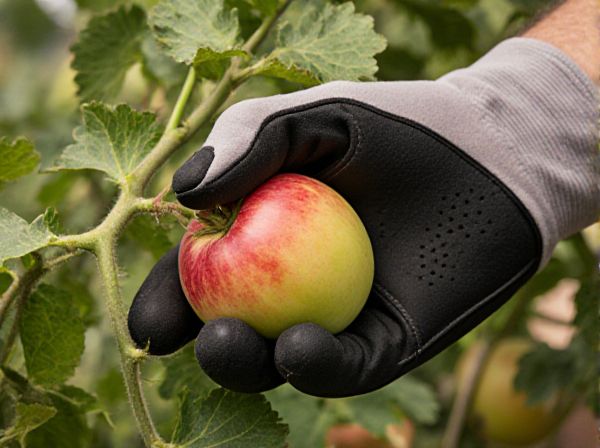
Peak ripeness vs Extended harvest Illustration
Harvesting at peak ripeness ensures maximum flavor, nutrient density, and optimal crop quality, providing the freshest produce for consumption. Extended harvest allows for a prolonged picking period, accommodating varying crop maturity rates and potentially increasing total yield. Balancing these approaches is critical for farmers aiming to optimize both quality and quantity in their harvest.
Table of Comparison
| Aspect | Peak Ripeness | Extended Harvest |
|---|---|---|
| Definition | Harvesting fruits or crops at optimal maturity. | Harvesting beyond optimal maturity to extend yield. |
| Flavor Profile | Maximum flavor concentration and balance. | Flavor may decline; risk of overripe or fermented notes. |
| Nutrient Content | Highest nutrient retention. | Possible nutrient degradation over time. |
| Yield | Standard yield at optimal quality. | Increased quantity but potential quality compromise. |
| Storage Life | Longer shelf life due to ideal maturity. | Reduced shelf life; higher spoilage risk. |
| Market Value | Premium price for quality produce. | Lower price due to diminished quality. |
Understanding Peak Ripeness in the Garden
Peak ripeness in the garden occurs when fruits and vegetables have reached their optimal flavor, texture, and nutritional value, making it the ideal time for harvest. Identifying peak ripeness involves monitoring color changes, firmness, aroma, and days since flowering to ensure maximum quality. Extending the harvest period may compromise taste and nutrient content, underscoring the importance of timely picking for the best garden yields.
What Is Extended Harvesting?
Extended harvesting is a technique where grapes are left on the vine beyond peak ripeness to develop more complex flavors, increased sugar levels, and higher phenolic maturity. This method can enhance wine depth and character, though it requires careful monitoring to avoid overripeness or fruit degradation. Wineries employing extended harvest strategies often balance sugar concentration with acidity retention for optimal wine quality.
Key Differences: Peak Ripeness vs Extended Harvest
Peak ripeness refers to harvesting crops at their optimal stage of maturity, ensuring maximum flavor, nutrient content, and quality. Extended harvest involves prolonging the harvesting period beyond peak ripeness, which can result in varied taste profiles and potentially lower nutritional value. Key differences include the timing of crop collection and the impact on texture, sweetness, and marketability.
Benefits of Harvesting at Peak Ripeness
Harvesting crops at peak ripeness ensures maximum flavor, nutritional value, and optimal sugar content, which directly enhances product quality and consumer satisfaction. Crops picked at their prime maturity reduce post-harvest losses and improve shelf life by minimizing the risk of overripeness and spoilage. This practice also streamlines processing efficiency, as fruits and vegetables at peak ripeness typically require less sorting and yield higher-quality end products.
Advantages of an Extended Harvest Strategy
An extended harvest strategy allows grapes to develop complex flavor profiles and balanced acidity, enhancing wine quality and character. This approach enables selective picking over multiple days, optimizing sugar levels and phenolic maturity for superior taste and aroma. Flexible timing reduces the risk of crop loss from adverse weather, ensuring the best possible fruit reaches the winery.
Crop Suitability: Which Plants Prefer Each Method?
Certain crops like tomatoes, grapes, and berries reach peak ripeness quickly and benefit from harvest at this precise moment to maximize flavor and nutrient content. Conversely, vegetables such as kale, spinach, and root crops tolerate extended harvest periods, allowing for continuous picking and prolonged supply without significant quality loss. Understanding crop suitability for peak ripeness versus extended harvest optimizes yield quality and market timing for diverse agricultural operations.
Impact on Flavor and Nutritional Value
Harvesting crops at peak ripeness maximizes natural sugars, antioxidants, and vitamins, resulting in superior flavor and optimal nutritional value. Extending harvest beyond peak ripeness can lead to nutrient degradation, reduced sweetness, and diminished texture quality. Controlled extended harvesting techniques may preserve certain phytochemicals but generally sacrifice overall taste and nutrient density.
Harvest Timing: Signs Your Produce Is Ready
Peak ripeness occurs when fruits and vegetables have reached their optimal flavor, texture, and nutritional value, making it the ideal time for harvest. Extended harvest allows farmers to pick produce over a longer period, though it risks variations in quality and potential spoilage. Key signs of readiness include color change, firmness, aroma, and seed maturity, which indicate the perfect harvest window for maximum quality.
Storage and Shelf Life Considerations
Harvesting at peak ripeness maximizes natural sugar content and flavor, resulting in optimal immediate consumption quality but shorter storage life due to faster degradation. Extended harvest, which involves picking fruit slightly before full ripeness, enhances shelf life and firmness by reducing respiration rates and delaying spoilage, though it may sacrifice some sweetness and aroma. Storage conditions such as temperature and humidity must be carefully managed to maintain quality during extended storage periods.
Maximizing Yields: Balancing Ripeness and Harvest Length
Maximizing yields requires balancing peak ripeness with extended harvest periods to optimize fruit quality and quantity. Harvesting at peak ripeness ensures optimal flavor and nutrient content, while extending the harvest window allows for gradual picking to reduce crop loss and labor bottlenecks. Implementing precise monitoring tools and adjusting harvest timing based on real-time fruit maturity data enhances both yield efficiency and market value.
Peak ripeness vs Extended harvest Infographic

 gardendif.com
gardendif.com